That Could be Your Fishing Pond
It’s a dream many pondmeisters share. Young son or daughter, in the boat, enjoying the outdoors on your very own fishing pond. Birds flit above, something with scales spanks water’s surface not far from the boat.
For years, pond and lake owners carefully practice pond and lake management tactics. Proper fish stocking, adding cover or fish structure, fish feeding, pond fertilizing, dealing with runaway aquatic vegetation growth.
Long years, short years, go by raising the family, working hard at what you do. Stealing time to go fishing, and enjoying your pond and the outdoors.
Recently, there have been a number of pond owners who let us know if what they are doing is working and they are having a ball. Here are a few photos and some stories to share.
Johnny Tanner, III is a wonderful family man from Carrollton, Georgia. He takes care of a fourth generation grocery business while being the quintessential husband and father, doing what good men do. Of course, his bride takes pretty good care of him, too. She makes great chicken pie. I know that, first hand.
Johnny lives on a lake, plus has property with its own lake, a pet lake project dating years ago. Eight or ten years ago, Johnny renovated the lake just outside of town, restocked it with fish, and is doing everything he can do to have the greatest bass lake he can create.
He is exceptionally passionate about it. He believes in lake management. He believes in proper fish stocking. He believes in God and Country.
In the meantime, Johnny has spent countless hours doing what he can do with the lake behind his home. It’s a community lake with few rules, and few helpers. Over time, Johnny has added fish cover, especially Christmas tree brush piles. He has kept logs of his bass catches, tagged fish, and kept pretty good records. He has tagged fish weighing four to nine pounds.
He has a new story to tell.
Here are his words.
“On September 26, 2004, my son John (who is 8 years old and uses a baitcaster) and I were at Lake Carroll in Carrollton, Georgia about to go for a ride in the boat. I suggested we put a fishing rod in the boat. While we are out there we might as well fish a little bit. Fishing conditions were terrible but we put a rod in anyway. After an hour we had not caught anything. Winds were from the east at 15-20 mph. (Isn’t there a saying that if the wind is from the east the fish bite the least?) It was the day Hurricane Jean was coming up the eastern coast.
“John had picked out a 1/2 oz white spinnerbait. It was 7:00 pm and I cast it out 3 or 4 times trying to find some submerged trees. We had put out several trees in an area using the old pickle bucket method (May – June 1999 Pond Boss article X Marks The Spot). When I finally came across the top of them a bass hit and almost took the rod out of my hand. It was pulling the drag pretty good when I asked John if he wanted to bring it in.
“I handed the rod to John and immediately he said ‘Daddy the fish is going to pull the rod out of my hands.’ I repositioned his hands so the left hand was in front of the reel and the butt of the reel was in his stomach. It was a standstill for what seemed like an eternity. Finally, John started to get some line back on the fish as I moved the boat closer in her direction. John got the trophy bass closer and when she saw the boat, she went straight down. I thought for a minute that the rod was either going in the lake or going to break in half.
“My son John was straining with all he had.
“Finally, the fish came up and I almost had a stroke. I reached down and picked up the giant bass and brought her in the boat. The hook immediately came out of the fish’s mouth. At this point I had no idea how much this fish weighed because I had never, ever seen one this big.
“I had a set of Normark digital scales in my tackle box that went up to 10 pounds. When I put her on the scales, they started flashing like they were broken. I tried it again and again they flashed double zero. Finally, I let the fish down easily on the scale and watched them register 4 pounds the 5 then 6… .7… .8… .9… .then flash. I knew we had the bass of our lives. (My biggest bass ever is 9 pounds 3 oz. which I tagged and released in this lake).
“We got back to the dock and I had another digital scale that went up to 15 pounds. When I put her on those scales they registered an amazing 12 pounds and 4 ounces. I checked the scale when I got back home and it was correct to the ounce.
“The first thing John said is ‘Daddy, can my name be on the plaque,’ which I replied that he had done more work than I had so yes when we get her mounted we will both be on the plaque. What I didn’t tell him is that if I had known the fish was that big, he probably wouldn’t have gotten the rod.
“We kept her alive for a couple of hours in a cooler full of lake water and I debated whether to release her or keep her. I finally thought that in that particular lake I have records going back to 1994 of releasing between 150 and 200 bass that I have personally tagged. Their weights are from 4 pounds to 9 pounds. I also knew that a bass this big probably would have been in the neighborhood of 15 years old or more and had very little life left. So I decided to keep her. It was a tough decision, but when I saw the look on John’s face, and quickly reflected about my life, fishing with my Dad, and looked back at John, it was an obvious decision. I knew John may never see a fish this large again. We have always practiced catch and release and continue to do so.
“Lake Carroll is about 150 acres and full of Crappie and Gizzard Shad. The bass (even the big ones) have plenty to eat.
“Now, Little John and I have a fishing story that neither one of us will ever forget.”
Then there’s 30 acre Fin & Feather Club Lake in Atlanta, Texas. Gordon Pynes and his neighbors are conscientious about pond management in their pristine east Texas fishing hole. A number of people live around the lake and this club works to educate their members. Years ago, the lake was a vegetated mess full of algae and aquatic vegetation, when one of the members took it upon himself to become the caretaker. He had a pond management agenda, one that didn’t necessarily jibe with the rest of the membership. After all, they hadn’t done much pond management, except stocking a few fish now and then. The proactive member got their attention; they united and created a good pond management strategy. They limed the acid water lake to adjust the ph levels, fertilized the pond as needed, set up some fish feeders, and began culling slot bass.
The results on their fishery have been predictably amazing.
Electrofishing surveys have yielded bass larger than twelve pounds. Take a peek at the photos of recent fish collected, weighed and measured.
Then, there’s Stan Graff. You might remember the Pond Boss Magazine cover story several years ago. Stan has had hundreds of gar removed from his 30 acre lake in northeast Texas. With fish feeding stations, and moderate aquatic vegetation control, the program has yielded quick results. Slot sized bass, without competition, have grown to look like footballs with a mouth.
You can’t wipe the grins off the guys’ faces. Fishing is fun again at Flagg Lake.
Everyone enjoys looking at giant fish. But, knowing the effort it takes to provide the best habitat, best forage fish, best genetics and best pond management to create a moment in life is staggering to think about. Everything must come together at the right time, at the right place. Even when the stars line up, there’s no guarantee what you do will work. But, here are three shining examples where pond management has paid off.
POND BOSS Magazine is the world’s leading resource for fish, pond and fisheries management information including discussions on muddy water, raising trophy fish, fish feeding, building a pond, algae control and more. Check us out at www.pondboss.com or contact Bob Lusk, the Pond Boss himself, at 903-564-5372. His books, Basic Pond Management, Raising Trophy Bass and Perfect Pond, Want One, may be purchased by calling 800-687-6075 or ordering online at www.pondboss.com














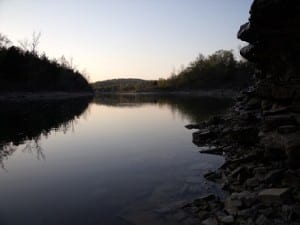
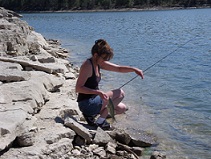
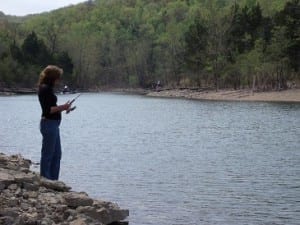
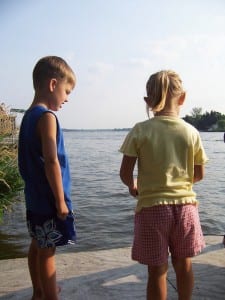
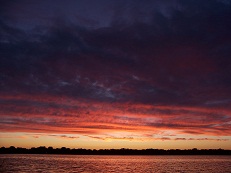
 If you own or manage private waters anywhere in the world – or want to – Pond Boss is the leading authority. Pond Boss magazine and pondboss.com provide valuable, up-to-date information on the topics, products and services you need to be a better steward of your land and water. Learn and share from the nation’s leading pond management experts and our family of friends. We stand ready, willing and able to assist.
If you own or manage private waters anywhere in the world – or want to – Pond Boss is the leading authority. Pond Boss magazine and pondboss.com provide valuable, up-to-date information on the topics, products and services you need to be a better steward of your land and water. Learn and share from the nation’s leading pond management experts and our family of friends. We stand ready, willing and able to assist.

 Photo: Kate Danson
Photo: Kate Danson MNN: What is this book about and why did you decide to write it?
MNN: What is this book about and why did you decide to write it?